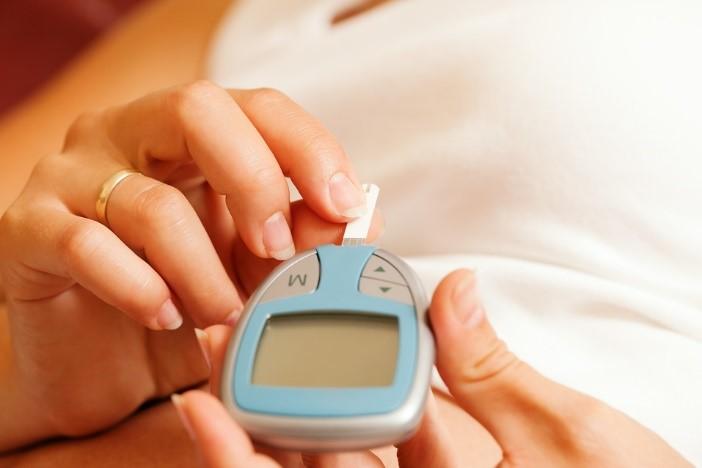Currently, about 31 million Americans have diabetes, and another 84 million have elevated blood sugar levels (prediabetes).
In addition, our diabetes rates have continued to explode over the last few decades. Between 1990 and 2013, US diabetes rates skyrocketed by a whopping 71 percent!
Now the begging question here is: What’s going on?
Well, to answer that, you need to understand the relationship between sugar and your body, plus how conventional medicine has failed to address the underlying problem.
Too little, too much or just right
Glucose is essential for all of your body’s cells, especially your brain!
That being said, maintaining proper blood sugar levels is crucial to your health and life, and any variances from “normal” blood sugar can have devastating consequences.
Blood sugar levels can be considered abnormal in two ways:
Hypoglycemia (too little)
Low blood sugar (hypoglycemia) is a blood sugar value of less than 80.
When your blood sugar plummets to between 60-80, you will feel shaky, jittery, anxious, sweaty, confused and irritable. If it dips further down between 40-60, these symptoms become more severe.
And if it drops to below 40, you will become disoriented, confused, and eventually slip into a coma and die.
Thankfully, your body has several built-in hormonal reactions to deal with hypoglycemia. When blood sugar drops below 80, adrenaline is secreted to make more sugar available to your cells, and glucagon steps up the conversion of fat into sugar. Growth hormone is also released which increases blood sugar during times of stress.
Hyperglycemia (too much)
Elevated blood sugar (hyperglycemia) is a blood sugar value over 110.
Unlike hypoglycemia, your body doesn’t have sophisticated safety procedures to help correct hyperglycemia. As such, many diabetics are walking around with frighteningly high blood sugar and don’t even know it.
Chronically elevated blood sugar opens you up to major complications including heart disease, circulation problems, kidney disease, retinal degeneration (leading the blindness), neuropathy causing numbness, pain and burning in the extremities, foot ulcers progressing to gangrene and a high risk of infection.
The two types of diabetes
Type 1 diabetes is the less common type of diabetes, representing only 5-10 percent of cases.
With type 1 diabetes, there is a malfunction of the pancreas, resulting in inadequate insulin production. Type 1 diabetes is frequently an autoimmune condition (meaning your body’s immune system attacks the insulin-producing cells in the pancreas); plus it can also be the result of damage to the pancreas from an injury or illness.
People who have type 1 diabetes MUST take insulin; otherwise serious consequences or death can result.
Type 2 diabetes is the form of diabetes that is experiencing explosive growth.
Type 2 diabetes is actually pretty straight forward—it’s all about supply and demand. It occurs when a long history of eating foods (especially refined carbs) that raise blood sugar repeatedly creates more sugar than your body needs to burn for energy!
In other words, you regularly eat like a marathon runner but you sit on the couch.
This forces your body to have to make more and more insulin to bring your sugar level down, and eventually your pancreas has trouble keeping up with the insulin demand.
Insulin resistance adds an additional twist to this scenario. After repeatedly being barraged by insulin to “mop up” the sugar in your bloodstream, eventually your cells “shut their doors” and refuse to take in any more sugar—known as insulin resistance.
At that point you’re looking at high blood sugar AND high insulin levels, which can trigger plaque development in your arteries, lead to hypertension and edema (swelling), and suppress growth hormone needed for tissue regeneration.
Why medications are not a complete answer
There are several go-to medications for type 2 diabetes, but none of them is a complete answer or addresses the underlying issues.
Here are several types along with my comments:
Metformin: Metformin works by decreasing glucose production by your liver and increasing the insulin sensitivity of your body tissues. But this is only a temporary fix because you can only force your cells to absorb increasing amounts of glucose for so long.
Sulfonylureas and Meglitinides: These medications help your body secrete more insulin. But if your pancreas is already insulin-exhausted, it can be like trying to get blood out of a stone.
Thiazolidinediones: Similar to metformin, these drugs make your body's tissues more sensitive to insulin. They’ve also been linked to an increased risk of heart failure and fractures. Oops.
Insulin: Taking insulin for type 2 diabetes and insulin resistance is like dumping water on a saturated sponge and expecting it to absorb more water.
Address the underlying issues!
To get a handle on type 2 diabetes and insulin resistance, you have to address the underlying sugar “supply and demand” issues, as well as support your body’s efforts to maintain proper glucose levels and insulin production!
Here’s how:
Take care of your diet. It’s crucial to avoid sugars, sweets, grains and starches as much as possible. Foods like these create an influx of glucose into your bloodstream and that’s not something you want to do! Instead concentrate on proteins, healthy fats and non-starchy vegetables (all vegetables except potatoes and corn).
Support proper vitamin D levels. Vitamin D protects against the complications of diabetes, plus it is necessary for the production of insulin. Our outstanding Optimum DK Formula with FruiteX-B can help ensure your body has a healthy supply of vitamin D, along with its partner vitamin K.
Get enough sleep. Studies suggest lacking sleep can raise stress and blood sugar levels, encouraging insulin resistance. If you have trouble sleeping, try lavender essential oil on your pillow (our Mooseberry Essential Oils are the best!); drinking chamomile tea in the evening (and avoiding caffeine, sugar and alcohol); taking a warm bath with Epsom salts; or taking tryptophan supplements.
Get your heart pumping. Exercise has been shown to help increase insulin sensitivity in your cells, which is exactly what you need to fight and reverse insulin resistance! Pick the activity that’s right for you, get your doctor’s nod of approval and put on those sneakers!
Do all you can to keep the diabetes epidemic far away from you!
To your health,
Sherry Brescia












Dr.Sarah Hallberg (Indiana State University) has had good success with her clients using the ketogenic diet – tailored to each individual of course. Lots of videos and TED talks available.
Type II Diabetes is HORRIBLE, I had it. Let me emphasize (HAD it). Luckily I found this site http://witt.MyCTFOCBD.com , ordered a bottle of Natural Flavored 500 Mg. I take about 4 drops a day and my symptons are GONE! A bottle lasts me about 3 months and I don’t even take my Metformin anymore! I’d like to list all the other ways I’ve benefited from it, but I’d be typing for days.